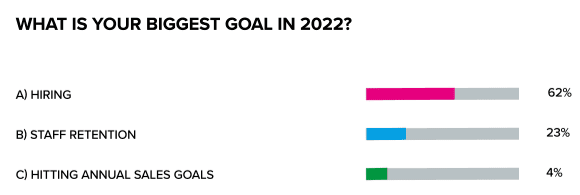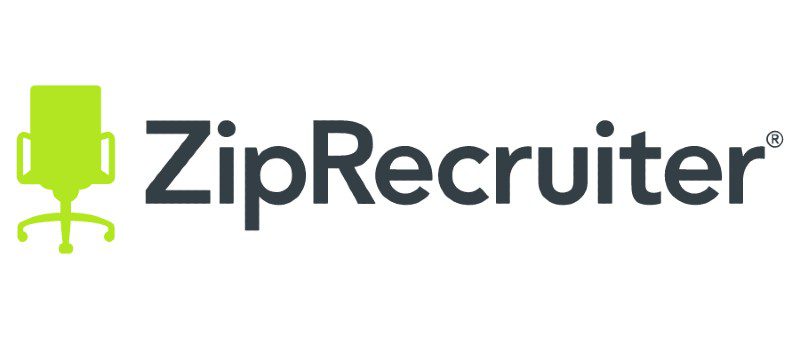8 ways to succeed in a tight talent market
Understand what new labor market data means for your talent acquisition strategy.
Hear about the latest trends on wages, work preferences, and hiring bonuses.
Get the latest insight on how to succeed in a tight labor market.


Using brand new labor market data, UNLEASH is excited to share how unprecedented shifts in hiring and recruitment have affected talent acquisition operations.
In conjunction with Julia Pollak, Chief Economist at ZipRecruiter, Jon Kennard, Editorial Content Manager at UNLEASH chairs this session to uncover the realities of what’s happening on the frontline – from the reasons people are leaving their jobs in droves to the impact on wages and the future workforce. These ‘can’t-miss’ insights will help shape your talent acquisition strategy for 2022 and beyond.
Watch on-demand to:
- Zoom in on the five key predicted factors that will impact hiring dynamics in 2022 – from Omicron surges to investment in new technologies.
- Understand how to enable business success in the long-term by building flexibility and better line manager capability into your talent management model.
- Hear about the eight key areas that will enable you to overcome talent market difficulties.
Hiring in 2022 is giving employers ‘the biggest shock’
Prior to the pandemic, labor market dynamics changed slowly. For hiring organizations, it meant they only had to recruit when an individual resigned or they entered new markets. Signing on bonuses and golden hellos were reserved only for the most in-demand talent.
COVID-19 changed everything. With many HR and Talent Acquisition (TA) functions putting their recruitment on hold for at least part of the pandemic, the hiring market they’ve re-entered is very different from the one they used to operate in. Labor market records have been broken, employees are re-considering what they want from their jobs, everything is a lot more digital and remote, and employers have to work harder to get the talent they need for success. In this webinar session, Julia Pollak, Chief Economist, ZipRecruiter explains how this will impact your organization’s talent strategy and business plans.
Why is hiring the biggest challenge?
During the live webinar session, we checked in with attendees to see which was their biggest goal – in other words, the area of strategic importance they needed to deliver against – in 2022.
Here were the results:

Pollak was not surprised to see hiring come out on top. With the pandemic changing labor market dynamics, 2021 saw the best job seeker’s market on record which, of course, laid the foundation for the most challenging employer’s market on record. A challenge that was exacerbated by inflation, supply chain disruption, and slow labor force recovery.
Many employers in the last two years, when they sought to hire people, received the shock of their lives. All the things that they used to do, that worked perfectly well before, are no longer working.
Julia Pollak, Chief Economist, ZipRecruiter
These are all issues that haven’t been solved for 2022. In fact, they have potentially been made more difficult by new surges of COVID-19, absenteeism, and the potential for further restrictions. Not forgetting the war in Ukraine and its impact on business, ongoing concerns about health and safety in workplaces, as well as employee worries about balancing work with external factors like child care.
This makes it important, as Pollak explained, for employers to take stock and adopt best practice approaches in order to retain a competitive advantage going forward. As she clearly laid out: organizations cannot afford to ignore these challenges as they are measurably real, as evidenced by labor market numbers, and they do require an according shift in strategic talent acquisition and retention response.
Inflation and remote work: How do they impact labor market dynamics and pay?
Though much of the recruitment landscape analysis, which business leaders and HR practitioners are likely familiar with, focuses on the employer-employee-remuneration dynamic, Pollak described another factor that is driving change in the labor market: inflation. With inflation galloping away at its fastest pace in 40 years – it hit almost eight percent in February – over nine in 10 US businesses are planning to increase pay this year, in part to circumvent labor shortages and hiring challenges.
Pollak noted that, counter to most individuals’ initial instinct, inflation can actually help take the sting out of increased pay packets that many organizations are using to entice hard-to-hire talent or retain employees. However, for many businesses, it means they may not be able to offer the pay they need to stand out in the labor market, as they are being squeezed in other areas as prices rocket.
Furthermore, with inflation hitting hardest in areas like gas prices, Pollak explained that businesses need to consider the structure of work they are offering potential hires as many now want remote work. Highlighting ZipRecruiter data that shows the disconnect between the number of employees wanting remote work compared to the number of employers offering fully remote roles – not many, with 90% of advertised roles needing employees in a physical workplace at some point – she noted that with gas prices rising, it could leave some employers without the talent they need as job seekers look for remote roles, in part to cut commuting costs.
All the job seekers are looking at the 10% of jobs that are remote and that could get even worse with inflation.
Julia Pollak, Chief Economist, ZipRecruiter
What can employers do to come out on top in a talent tight market?
Although these are but few of the issues business leaders, HR and TA practitioners are having to deal with – long term decrease in labor force participation is also an issue, as well as the impact of new technologies – Pollak went through, in-depth, some key areas that could help organizations stand out in an abnormal labor market situation, one where there are five million more job openings than American job seekers.
It’s a daunting challenge but to get ahead organizations should:
- Optimize: Make your advertised role stand out and don’t rely on what used to work. Show salary ranges, make the job title easy to understand, consider SEO, use gender-neutral language. Think skills, not degrees.
- Be proactive: Reach out to prospective applicants using solutions like ZipRecruiter’s Invite-to-Apply. Don’t just wait for candidates to find you.
- Consider efficiency: Think about how skilled HR and TA practitioners improve the process and how technology has a central role to play.
- Engage employees: What do they want more of? What would be easy to change? Ask them!
- Think about wellness: Especially financial wellness. Can employees access earned pay early? Are they able to change shifts and ease the burden of work schedules?
- Support remote work: Don’t just offer it, ensure that your organization actively supports it. Work isn’t about ‘keeping up appearances’, it’s about productivity and output.
- Develop your EVP: Are you thinking holistically? Do you allow employees to grow and flourish and deliver on things they care about? This is at the center of what talent wants.
- Don’t forget about the pandemic: COVID-19 is still happening and it’s on employers to ensure employees are safe. Data and monitoring as well as health and safety are key to this.
To join our next session with ZipRecruiter, exploring how to recruit successfully in tough times, check out the details and register here.
